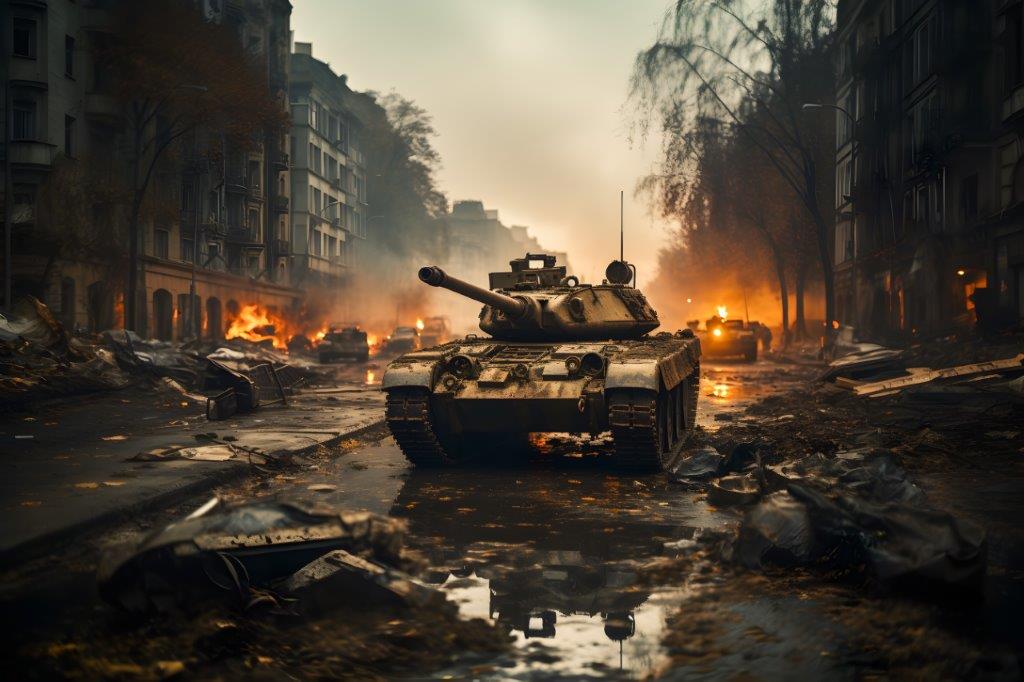Flashpoints And Powder Kegs: A Glimpse At Armed Conflicts In Our Time
Some armed conflicts have been raging for years, others are bubbling under the surface: Travel Security Analyst Thorsten Muth summarises the most important crises of the present day.
In the 21st century, the expansionist fantasies of national populism have led to bloody escalations that can hardly be controlled by the established international security mechanisms. Even before one crisis has been sustainably resolved, a new one is already emerging. Looking back, there is little hope for an easing of tensions in 2024.
War between Israel, Hamas and Hezbollah
On 7 October, an unprecedented spiral of violence began that would cost the lives of around 1,200 Israelis and 15,500 Palestinians by the beginning of December. A terrorist attack by the militant Islamist group Hamas, which began with thousands of rocket attacks on major Israeli cities and massacres in towns near the border, was followed by air strikes and an extensive IDF ground offensive in the Gaza Strip. Observers briefly feared a supra-regional escalation, but despite protests and expressions of solidarity from the Islamic world, this failed to materialise. However, the United States deployed a warship to the eastern Mediterranean, sending an unmistakable warning to Iran in particular. Hezbollah, which is supported by Tehran, opened up its own theatre of war with daily attacks on northern Israel, even though Lebanon, shaken by constant crises, cannot afford a direct confrontation with its southern neighbour. The sporadic attacks by Yemen’s Houthi rebels on ships in the Red Sea also presumably bear Iran’s signature.
Flashpoints in Europe: Ukraine and Kosovo
The war in Ukraine is entering its third year, which is also reflected in the travel catalogues: many German tour operators have removed the Baltic states, which are normally considered safe, from their programmes. And if you look at international air traffic in real time, there is still a huge gaping hole on the world map between the Eastern Carpathians and the Donets Basin. Because many airlines no longer cross Russia, flights to Asia in particular have become more expensive. On the ground, the fronts have long been deadlocked despite a Ukrainian counter-offensive that has resulted in heavy losses. The armed forces on both sides are under considerable pressure and it is unlikely that the war will spread to further countries: the Kremlin has probably little intention of opening a new front in the foreseeable future, especially not against European Union states. For now, Russia is satisfied with pinpricks: artificially controlled migration movements, which are causing a strain on the EU’s eastern external borders, recently forced the closure of the Finnish-Russian border crossings. Elsewhere in Europe, another conflict flared up at the end of September: in northern Kosovo, a patrol of Kosovar security forces was caught in a deadly ambush. Serbia briefly deployed troops on the border and the Kosovo government feared an invasion. The tensions between Prishtina and the Serbian population, who form the majority in the northern part of Mitrovica district, harbour potential for further escalation. Another aspect to consider is the situation in Bosnia and Herzegovina: the Bosnian Serb leadership, which does not recognise the Srebrenica genocide and also sympathises with Putin, is in permanent conflict with the international envoy who is monitoring compliance with the peace agreement.
A glance at East Asia: China, Taiwan and Korea
In 2022, President Xi Jinping has already announced China’s claim to be the new world leader: By the 100th anniversary of its founding, in 2049, the People’s Republic wants to be the technological, military and political frontrunner on a global scale. China is proceeding more quietly than its Russian allies and is primarily focussing on economic expansion, namely the One Belt One Road initiative. In the long term, however, risk managers should keep an eye on East Asia, as an old conflict is simmering here too: In mid-September, more than 100 Chinese fighter jets crossed Taiwan’s airspace, and the navy regularly practises sea landing operations. So far, Beijing has only been flexing its muscles, but it is questionable whether an escalation can actually be prevented indefinitely. For the moment at least, an invasion of the island, which has been de facto independent since 1945, seems unlikely: The People’s Republic wants to avoid a direct confrontation with the United States, which has a strategic interest in Taiwan. Meanwhile, worrying news has come from the Korean peninsula, where North Korea suspended an agreement with South Korea to reduce military tensions in late November. More weapons and troop contingents are subsequently to be stationed again on the border with the South.
Armenia and Azerbaijan: a resolved conflict?
In September, Azerbaijan’s President Aliyev brought the Nagorno-Karabakh conflict to an end single-handedly: After several months of blockade and systematic cutting off of electricity, gas and food supplies, he forced the Nagorno-Karabakh Armenians to surrender in a one-day military offensive. Under the eyes of the world public, ethnic cleansing took place when almost 100,000 Armenians who had remained in the disputed region after the 44-day war in 2020 fled to Armenian territory within a few days. Fuelled by the repeated failure of international security instruments, the conflict could now enter a new phase: Azerbaijan and Turkey are demanding a transit corridor through Armenia more confidently than ever and are even talking about a possible annexation of the southern part of the country. Back in October, US Secretary of State Blinken stated that an invasion was conceivable in the near future. Russia, which appears to have lost influence with the withdrawal of its so-called “peacekeepers” from Nagorno-Karabakh, is now playing a new role: Relations between Moscow and Baku have rarely been better, while the Russian-Armenian partnership – Armenia is part of the Russian-led military alliance CSTO – is at rock bottom. As there are no signs of a pro-Russian change of power in Yerevan despite the level of discontent in the population, Russia could offer itself as the guarantor of protection for a corridor through Armenia. It is still uncertain what the future will bring. With just over 2 million visitors a year, Armenia is still considered a hidden gem for tourists, but a renewed flare-up of the conflict could further destabilise the security situation in the entire region.

